
Benita Cooper, Expert Contributor
The first time I sat down with Daniel and Julie, Daniel made me a coffee. Not just any coffee, but the perfect cortado, my favorite drink. Admiring the latte art design, I thought, How can design support the way people really want to live?
For me, buildings are not static nouns. Building is a verb, a process, a service. A home should grow out of and give shape to the family’s aspirations.
Turning challenges into opportunities
Daniel and Julie found a 1950 rancher with low ceilings and disjointed rooms, but have two active girls, need a private wing for Julie’s parents, and plan to host large, frequent gatherings. Committed to giving this multigenerational family the dream life they deserve, we carved out 200% more usable space, and raised ceilings 150% higher. Seeing the dramatic transformation, people were knocking on the door with offers mid-construction!
Creating more by building less
Renovation is harder than new construction because you are wrestling with existing conditions. Expanding usable space without expanding the footprint makes it even harder. But sometimes the right choice is the hardest one. Rather than building up or out, we built down, grounding the home into the earth, preserving the beautiful landscape and lowering construction costs. Doing the most with what you have is good design, good stewardship, and good budget management.
Designing for light and life
Raising the ceilings was essential, because Julie and Daniel have a huge extended family who are very tall! To accentuate the soaring cathedral ceiling, we added skylights to frame the sky; expanded windows to frame the trees. Sunlight now comes in from every direction, dancing from wall to wall through the day.
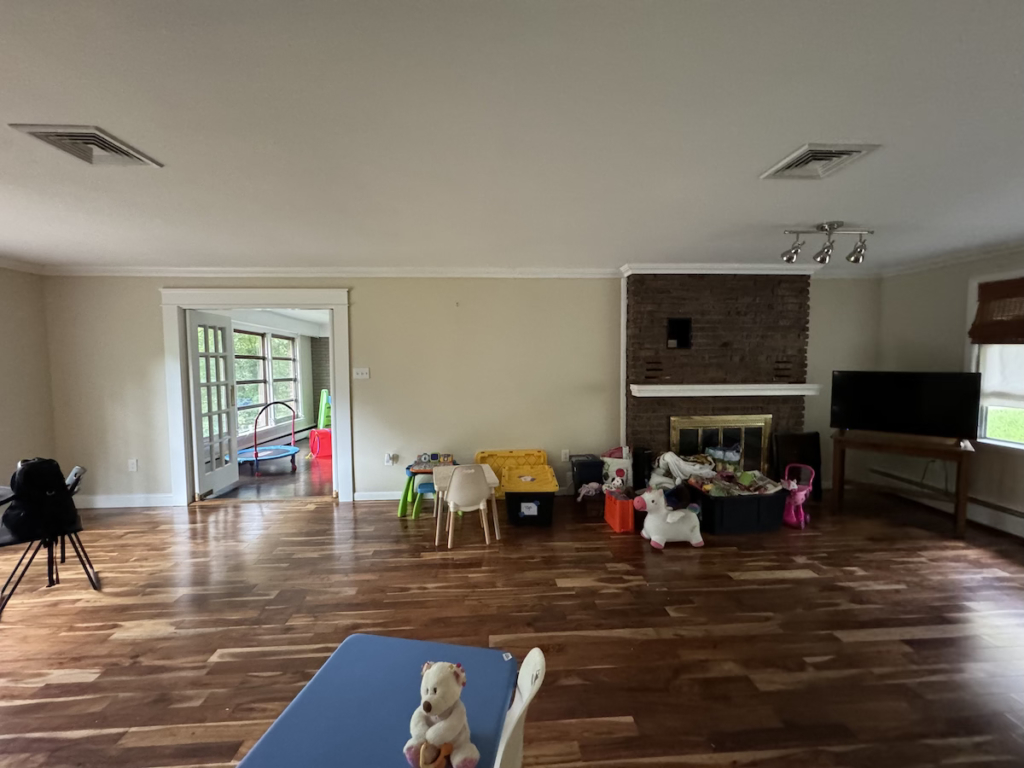
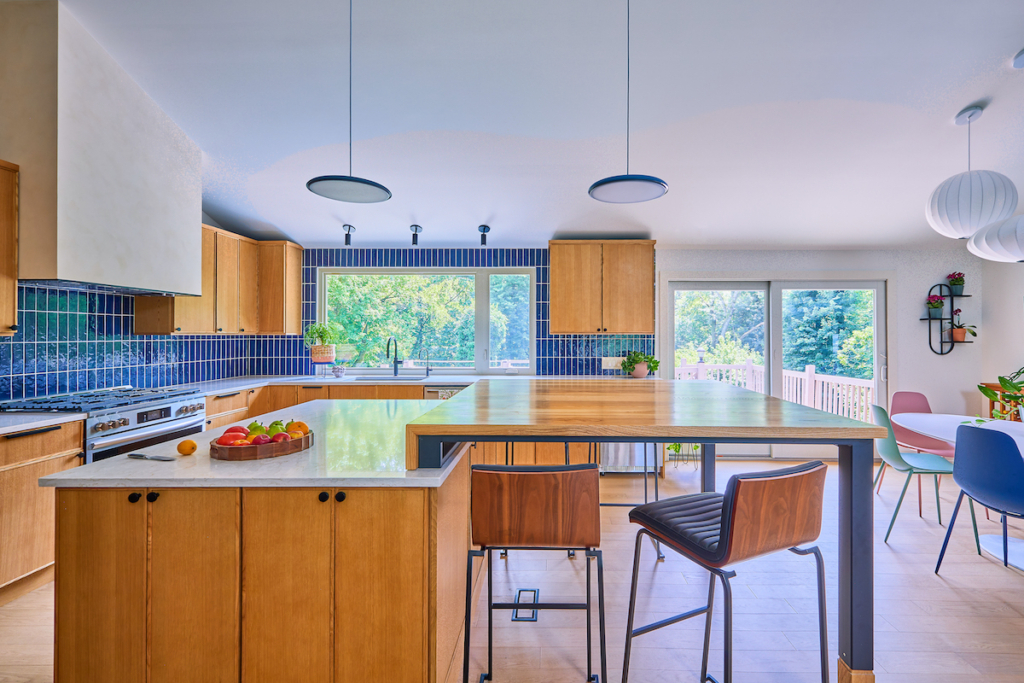
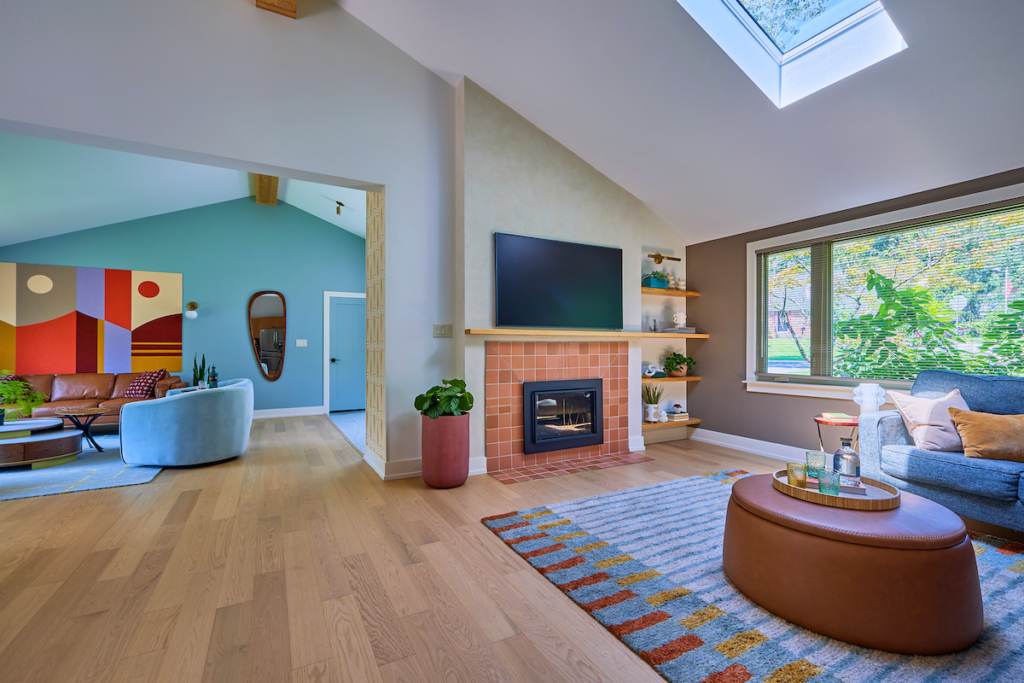
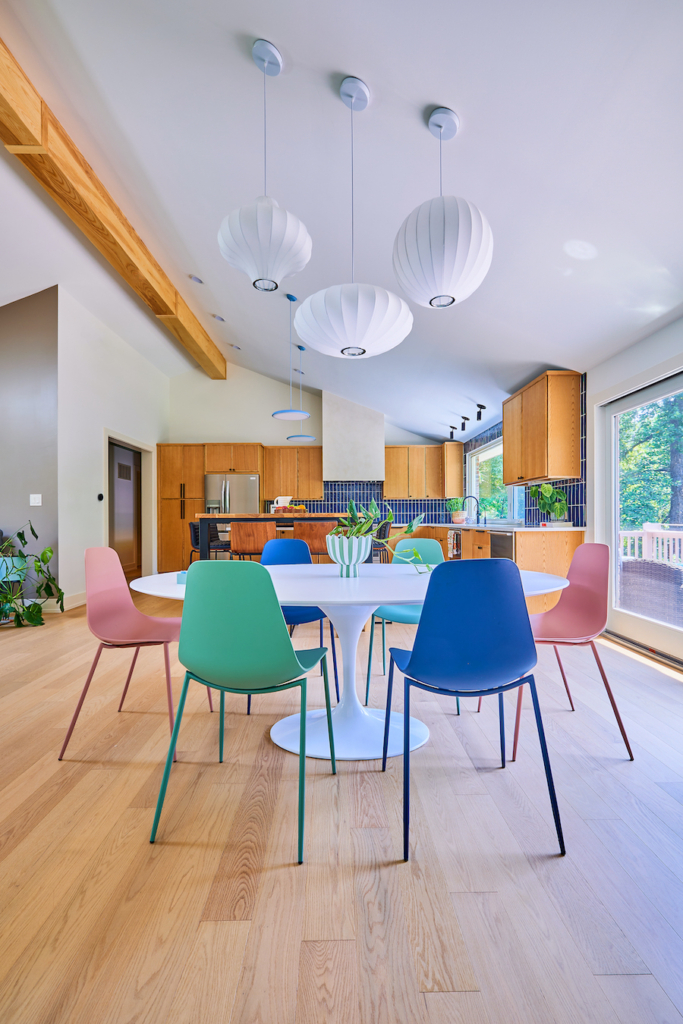
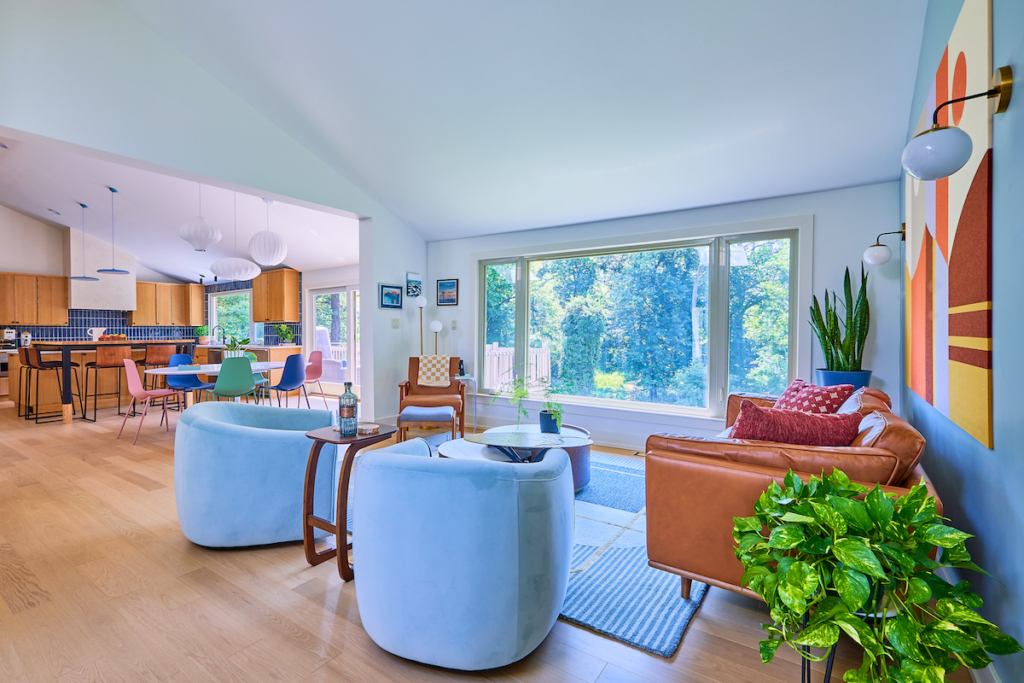
Custom Details: Coop Forge
Photography: Jason Cooper
Shaping connection
Space planning, for me, is about listening deeply to how a family wants to move through every moment of the day, and understanding it so well that you can give the perfect shape to the entire imagined experience. It’s so much more than a floor plan. It’s experiential. Here, the entry flows into the living room (which visually rolls right out into the wide open landscape), living glides into the dining and kitchen, kitchen into family room, family into the stair. Private bedrooms extend down the hall.
Arriving at the lower level (which we refused to call a “basement” from day one!) you are greeted by a generous view to the backyard. We tucked a bar under the stair, and a banquette under mechanical systems, turning every piece of building infrastructure into aesthetic exploration. An in-law suite for Julie’s parents, office, guest room, laundry, storage, mechanical room and multiple new bathrooms are woven into the space, like pieces in a puzzle. Not one inch is wasted.
Telling a story through custom details
Intentional details are what make a home personal. Here, we drew inspiration from the ash trees outside, and fabricated a collection of unique ash features. We wrapped two massive structural beams in hardwood casings to run an elegant horizontal line through the whole home. Also in ash, the custom kitchen island extension is both a showstopper and a mutl-purpose surface: homework, casual meals, big celebrations, late-night conversations. Subtler touches: ash shelving transforms into a fireplace mantel and frames an intricately designed fireplace surround below. For me, custom does not mean indulgent. It is the opposite: humble in intention, an expression of care.
Much like a small yet perfect cup of cortado.
Tips You Can Use
Doubling the square footage instantly raised the home’s market value. But the even greater value of this forever home is in how Julie, Daniel, their girls, and her parents can live now: connected with family, friends, light and nature. Here’s how you can do it too!
1. See challenges as inspiration.
2. Invite sunlight wherever you can.
3. Layer views to create flow inside and out.
4. Use custom details to tell your story.
5. Get professional help to make the most of what you already have.

